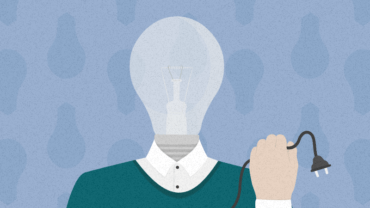Why Customers Aren’t Remembering Your CX the Way You Think They Are

How customers remember their experience with you is key to keeping them happy and to them coming back for more – but what moments actually stick in their heads?
In this article, you’ll discover:
- Why trying to perfect your entire customer experience (CX) is a waste of time;
- What actually influences your customer’s judgment of your CX; and
- How to make small changes to your CX to leave customers with an overwhelmingly positive impression.
Imagine this familiar experience. You’re in your favorite store shopping for new clothes. You easily find everything you were looking for and even manage to discover a new item that you can’t wait to wear out. Satisfied with your selection, you make your way to the checkout to complete your purchase.
But when you reach the checkout area, you notice a very long line and, even worse, it’s moving at a snail’s pace. You reluctantly get in line, but the longer you wait, the more irritated you get. You finally reach the end of the line and let out a sigh of relief as you place your items in front of the cashier. They scan your items and then prepare the card machine. You insert your card, ready to put an end to this experience once and for all so you can go home.

Discover ground-breaking ideas and fascinating solutions.
And that’s when you hear a diabolical BEEP! Oh no! The card terminal didn’t process your payment. The cashier casually apologizes to you and says the terminal has been acting up all day and that it “just needs a second” to connect. You end up waiting a few more grueling minutes until finally the machine decides to cooperate. You pay and then leave the store annoyed and disgruntled. You swear you’ll never come back.
But does your anger even make sense? After all, you did:
- Find everything you need
- Enjoy the ambience of the store
- Purchase an unexpected but very exciting item
And the only downside was:
- A longer than usual checkout time
So why were you so put off by this experience?
Well, this is due to the peak-end rule. The peak-end rule is a concept in which people tend to judge an overall experience based on the emotional peak (the most positive or negative point) of the experience and how the experience ends. These points stick out more in people’s memories, and because of this, they’re used to judge the whole experience.
In the above shopping experience, the emotional peak was you waiting in that long line (with your anger building up) and the end was you unexpectedly having to wait even longer for the malfunctioning card machine to work. So although on average, the experience was pretty good, the negative peak and end meant that you rated the overall experience as bad.
The peak-end rule is a concept in which people tend to judge an overall experience based on the emotional peak (the most positive or negative point) of the experience and how the experience ends.
Why does this matter? Well, this is exactly how your customers are evaluating their experience with your product.
Keep reading to find out more about the peak-end rule, what this means for your CX, and how to leverage the rule to maximize your customer satisfaction.
A quick look into the peak-end rule
The peak-end rule was first developed by the “grandfather of behavioral economics”, Daniel Kahneman, and his colleague, psychologist Dr. Fredrickson, when they realised that people’s memories of experiences are different than what they actually experience.
In 1993, Kahneman and Frederikson ran a study in which participants had to dunk their hands in ice-cold water. In the first part of the study, they had to keep their hands in the water for 60 seconds, and in the second part, they had to do the exact same 60 seconds, but with an added 30 seconds where the water was warmer by 1 degree Celsius.
After completing both of these rather uncomfortable tasks, the participants were told they would have to repeat one of the parts. Which one do you think they chose?
To us, it seems obvious – both tasks are pretty uncomfortable, but the first task was much shorter. So of course it makes sense to choose the first one.
However, this wasn’t the case. A stunning 80% of the participants chose to repeat the second, longer task!
Why? Well, Kahneman and Frederickson concluded that “evaluations (of events) are often dominated by the discomfort at the worst and at the final moments of episodes” and that this is what forms people’s memories.
They argue that our brains reduce our memory of an experience to a ‘snapshot’, because this makes judging the experience much quicker and easier than recalling the entire event. This ‘snapshot’ is made up of moments that stand out the most, as they are easier to remember, which are: the most emotionally influential moment (the peak), and the last experienced moment (the end).
Thus, the peak-end rule was born.
Our brains reduce our memory of an experience to a ‘snapshot’, because this makes judging the experience much quicker and easier than recalling the entire event.
Many studies found the same results, including when people listened to annoying noises and had their finger squashed with a mechanical device (ouch!).
Some of these even show that the peak-end rule applies commercially.
For example, one study found that the rule also comes into play when people watch video advertisements; their judgments are dominated by the emotional peak and the final moment of the ad. Notably, this judgment of the ad influences their brand evaluation too, in turn translating to how much they like the brand.
Another study in 2008 found that the order in which people were presented with two free gifts (one that was ‘better’ and one that was ‘worse’) completely changed how they viewed the experience. In line with the peak-end rule, when they were presented with the ‘worse’ gift after the ‘better’ gift, their reaction was more negative than if they had received just a single(!!) ‘better’ gift.
Okay, but why does this matter?
Well, this is the bias that controls how your customers perceive their experience with your company and product, a.k.a. the entirety of your CX.
An easy illustration of this is a customer service call center. Although customer service representatives are trained on how to effectively interact and communicate with customers, it’s often the case that customer satisfaction is low. Even with companies where there’s a call script developed by behavioral consultants and CX engineers that’s been perfected over hundreds of hours, customer satisfaction may still remain low.
What often happens is that although the overall CX is great, customer service employees tend to drop in quality at the end. They’re happy to be approaching the end of an interaction, and they know where the conversation is heading, so they relax their level of effort. They might even already start thinking of the next customer they need to help or the next task they need to perform, and then get distracted or distant.
Customers sense this drop in effort and quality, and use these final moments to judge this interaction, leaving them with a negative impression of their overall experience with the service.
This is unfortunately a very common mistake – businesses provide incredible customer experience throughout an encounter but mess up the ending, causing the customer to perceive the entire experience as worse than it actually was.
It may sound terrifying, but you might be making the same mistake by underestimating the power of having a strong positive ending. But don’t worry, we won’t let all your hard CX work go to waste. By understanding the implications of the peak-end rule, you can drastically improve your customer experience with some clever tweaks.
Boosting your CX with the peak-end rule
Find your peaks
First, you need to identify your peaks. Draw out a customer journey map and identify each touchpoint with the customer throughout their experience.
Also consider edge cases (unlikely events that negatively impact a customer’s experience), such as what happens in the event of a website failure.
Evaluate the emotions that customers experience at each touchpoint. If you collect CX metrics (such as CSAT, CES, and NPS) or other feedback, use these to guide you.
Highlight the points at which people will feel the strongest negative feelings, and at which they feel the strongest positive feelings.
Mitigate negative peaks
Minimize those pesky negative peaks! Yes, not all touchpoints with your product will be positive, and that’s okay, as long as you reduce the largest negative peaks.
This is key to making sure your customers don’t remember their experience as negative.
For example, you could reduce any wait times, as these are often a cause of frustration for many customers. If the wait times are unavoidable, then make them more bearable.
Or, think about any processes that a customer may have to complete. If these activities are overly complicated, they can be a prominent source of stress and negativity. A great way to tackle this is to simplify the process and reduce friction as much as possible.
End on the highest note
As highlighted earlier, this is often the place where companies make a crucial mistake: massively underestimating the importance of the end of a customer’s experience.
It is easy to neglect the ending, with a common thought of “Just end the interaction somehow. It doesn’t really matter because the customer already has what they need.”
Don’t fall for this trap.
By doing this you’re demolishing all the hard work you’ve put into engineering the entire interaction with your customer. If you end on a spiritless point, you’ll end up leaving the customer feeling completely uninspired, and you’ll be missing an easy opportunity to greatly amplify the customer’s experience.
By ending on a positive note, you solidify and even heighten their positive experience; leaving the customer happier and more satisfied by their interaction with your brand.
Strategically, this is the best place for you to put your efforts towards improving your CX. The end of an experience is a simple, yet incredibly powerful tool for leaving a lasting impression on your customers.
So, how do you end on a high note?
Simply implement mood-boosters at the end of the experience, such as surprise discounts, desirable free gifts, and avoid ending with a prompt for customers to say no (must-read case study here).
Take a look at what Disney does at its parks. At the end of the day, Disney puts on a breathtaking grand finale show involving a stunning spectacle of explosive fireworks, dramatic lights, and beautiful music. This way, instead of their customers remembering the long waits for rides, family arguments, and aching legs, they walk away with the memory of a magical experience they’ll want to return to again and again.
Maybe there’s some behavioral science wisdom to the saying “Save the best for last”…
Key Takeaways
- People remember experiences based on the most emotionally impactful moment (the peak) and the end of an experience. This is key to how they judge the experience and whether they choose to repeat it.
- The peak-end rule controls how customers remember their experience with your product. Design your CX around this rule to maximise its effect.
- Focus your efforts on ending each customer experience on a very high note. This will leave a long-lasting positive impression and make them want to come back.






